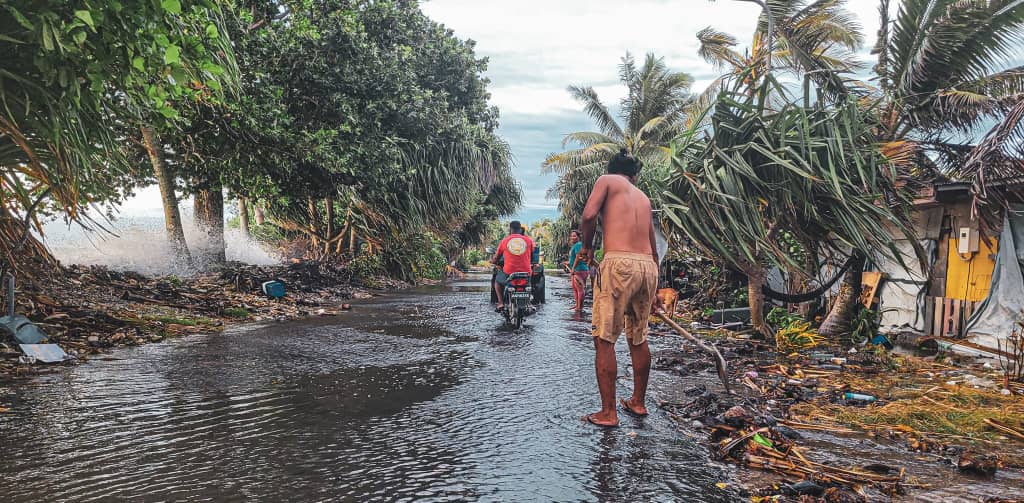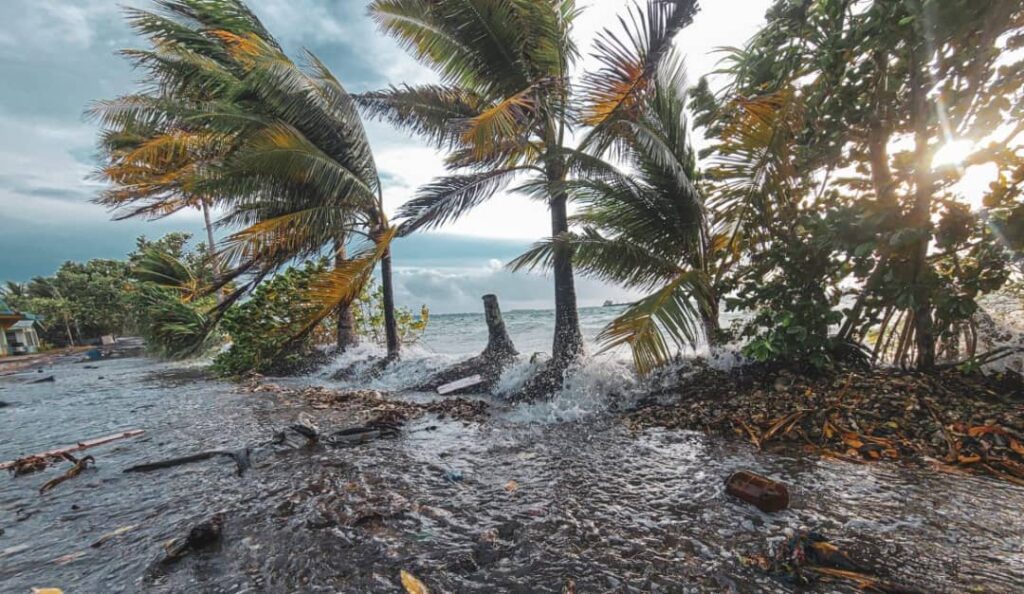Tuvalu, a picturesque island nation nestled in the vast expanse of the Pacific Ocean is currently grappling with a relentless onslaught of storm surges and towering waves, wreaking havoc on coastal communities.
As with most island nations, spring tides occur, in the case of Tuvalu, February’s king tides is nothing like before. The island’s one main road has succumbed to the fury of nature, submerged beneath torrents of seawater, exacerbating the already dire situation faced by Tuvaluans.

With this year’s storm surges and the rising sea inundating vital transportation routes, many of the island’s inhabitants are questioning their future in the face of unyielding climate crisis. The only main road, the lifeline connecting communities and providing the flow of essential services recently became an impassable river filled with water, displaced rocks and coastal waste.
The flooding of the main road in Tuvalu has taken its toll on underground electricity generation. Homes, business and essential services are now grappling with the harsh reality of life without electricity for hours even days. This not only disrupts daily lives but also poses significant risks to public health safety. Papua New Guinea, the largest island in the pacific also face such ferocity within its coastal communities.

Scientists have predicted that Tuvalu might be submerged within 50 to 100 years but Tuvaluans are optimistic. Many young people are questioning themselves whether to continue living in Tuvalu and what the future holds for them and their families. The spectre of displacement and the ever-present threat of climate related devastation loom large, provoking deep seated concerns about the sustainability of life on the island.
Related: https://insidepng.com/community-awareness-on-climate-change-unre/


Comments are closed.